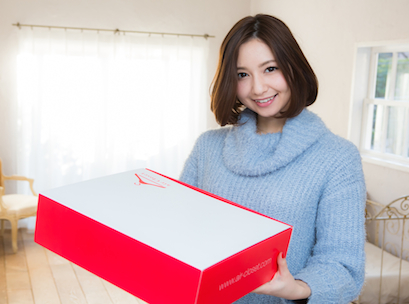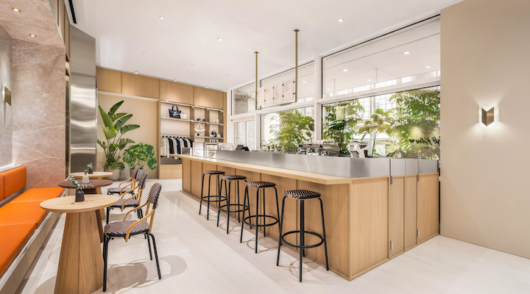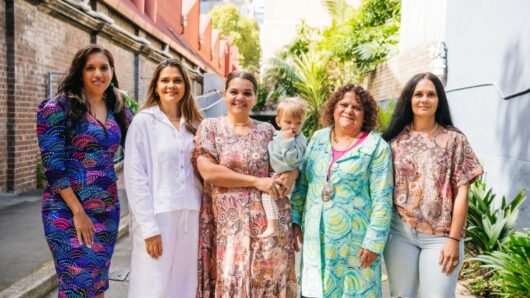A Tokyo subscription service offers time-poor Japanese women hand-picked fashion items, delivered free for a monthly fee.
Women may love shopping, but for time-starved professional females and housebound new mothers adapting to round-the-clock parenting, finding time to discover new fashion can become a hassle.
Enter AirCloset, a new service by Tokyo-based startup Neuer-Sieg. For JPY 6800 (US$57) a month, women can receive a box containing three trendy garments, hand selected by a professional stylist. The subscriber can wear each piece as many times as they like, and return the box whenever they’re ready to try something new. There’s no limit on how often the boxes are exchanged, and if a subscriber happens to find an item that they just can’t live without, it can be purchased at a price point lower than retail.
While straight-to-your-door fashion boxes are nothing new, the wear-and-return model is unique in Japan – and it’s already seeing strong early traction in the domestic fashion and startup communities.
“We sent out a press release introducing the service in October and planned to launch in December,” Satoshi “Ash” Amanuma, Neuer-Sieg’s co-founder and CEO, tells Tech in Asia.“Initially, we planned for about 2000 pre-registrations. In reality, we ended up with more than 15,000 by the end of December.”
Amanuma and his team of five were overwhelmed by the response. They decided to push the launch back to January in order to prepare more clothing and smooth out logistics, but pre-registrations continued to balloon.
“We had to cut off pre-registrations at the end of January,” he says. “More than 25,000 people signed up.”
AirCloset works thus: Women sign up on the site with a credit card and are automatically charged 6800 yen per month to receive an unlimited number of fashion boxes, with no minimum sign-up period. Users can sign up for one month and cancel if they wish. During the registration process, users select their style preferences based on photos of models wearing example outfits. Based on those selections, stylists attempt to curate items that suit their tastes – users don’t actually select any of the clothing directly.
Each box contains three items, which include a combination of tops and bottoms that can be worn together (i.e. a cardigan, a one-piece, and a pair of jeans). If there’s a cute dress or skirt that they absolutely must add to their wardrobe, a subscriber can visit the AirCloset website to see its discounted price (and comparison full retail price). If they opt to hold on to it, they can simply send the remaining pieces back and their card will be charged. A return shipping label is already inside each box. Users are urged to fill out a survey with the return of each box, which allows stylists to tweak future items based on fit, color palette, and so on.
The founder explains that a large part of the inspiration for AirCloset hits close to home. Amanuma has a three-year-old son and wanted to help his wife stay on top of current fashion trends despite having limited free time to go window shopping downtown. In the planning stages, he even considered launching it as a maternity and children’s clothing service.
“The first thing we did was interview more than 200 women aged 27 to 35,” Amanuma says. “Our specific target groups are career women and young mothers with children between the ages of zero and three. One thing they all seem to have in common is a lack of time to discover new fashion brands because their focus is on work or raising their kids.”
After getting a sense of what target users wanted, Amanuma hired a professional stylist and a support group of fashion industry advisors. Brands are selected from those featured in three popular fashion magazines: Oggi and Classy, for career women, and Very, for fashionable young mothers.
Amanuma wouldn’t disclose the brand names that AirCloset will collaborate with, but he did say that more than 10 Japanese brands are on board with deals in the works to increase that number.
*Satoshi “Ash” Amanuma.
Amanuma wouldn’t specify when regular monthly memberships would begin, stating that it all depends on how much clothing his stylists can amass and how much warehousing and shipping his current logistics partner can handle. “We haven’t raised quite enough money for that stage, but we’re trying to speed up that process,” he says. “We need to reassess in a month or two how many brands will be able to provide clothes [in bulk].”
There’s currently a waiting list for new pre-registrations, but the first wave of AirCloset boxes already shipped to the initial pre-registered users on February 17.
AirCloset is a simple idea with a complicated process. Beyond clothing curation and an enormous amount of boxing and shipping, garments must be individually dry cleaned when they arrive back in the warehouse. No one wants to receive a box with clothing that looks like it came from a second-hand shop, so each piece must be examined for wear and tear before the boxing and shipping process repeats itself.
Amanuma explains that, for example, if a white dress comes back with cigarette burns or a red wine stain, it will be returned to the subscriber and they will be charged for it. He’s considering implementing an insurance option that covers the cost of damaged gear, as well as offering deeper discounts to purchase items that have already been shipped out and worn by other users.
At less than US$60 a month per subscriber, is there any room for turning a profit?
“If you think of AirCloset as just a rental service, you might assume that the profit margin is very small. But there’s also the eCommerce element – people always have the option to buy.”
There’s also another, potentially huge, revenue stream: big data. Each box is shipped with a questionnaire about the clothing it contains (which can also be filled out online).
“Retailers can learn a lot from what users buy and what they send back, but they can learn even more from the wearer’s feedback – current fashion trends, what styles and colors are hot or not, and so on,” Amanuma says. “We hope retailers will pay us for that data.”
Amanuma’s plans for the future are three-fold: expand to other fashion items (i.e. hats, shoes, accessories), expand to other fashion segments (i.e. men’s, kid’s, maternity), and expand overseas – particularly Southeast Asia.
“I know that many women in Southeast Asia, especially Thailand, are interested in Japanese fashion,” he adds. “We can bring this same system to other markets, with Japanese brands or international brands [depending on each market’s interest]. I really believe in the idea of the sharing economy, so we’re trying to create something much bigger than a short-lived trend service.”
Le Tote in the US is doing almost the exact same thing as AirCloset, but with three pieces of clothing and three accessories for US$49 a month. Amanuma says that he hadn’t heard of Le Tote until after launching his own service.
“AirCloset is from our own idea, we didn’t think about competitors or anyone else doing this, but realized it was a pretty simple idea,” he says. “Later, we found out about Le Tote, which is still new in the US. Of course, there’s nothing like this in Japan.”
* For more eCommerce news, visit Tech In Asia and sign up for its daily news brief email.









